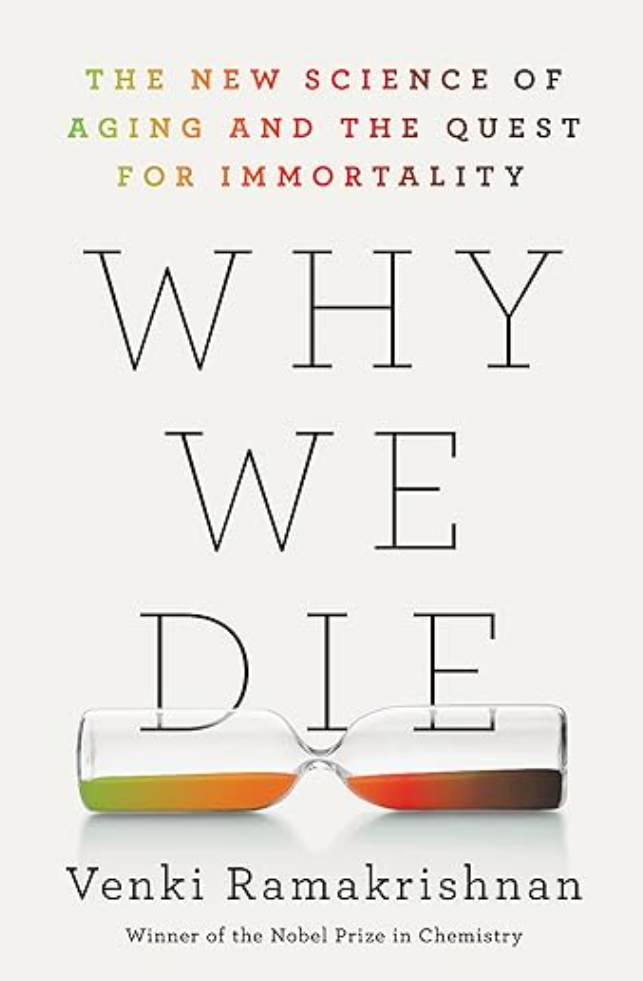Why We Die
Why We Die: The New Science of Aging and the Quest for Immortality
Venki Ramakrishnan
What it’s about
Written by a Nobel Prize laureate in Chemistry, this book presents the views of a molecular biologist on the challenges of living for longer. The author goes into the modern breakthroughs in our understanding of molecular biology and the resulting improvement in the available treatments of the symptoms of aging. He summarizes a wide body of scientific research, and the efforts to extend the human (and other creatures’) lifespan by altering our physiology. He also covers the philosophy of life and death and aging.
Why I like it
I enjoyed reading the book because it provided insights into biology, life, and death which are of interest to me in the same way they are of interest to most people. What particularly resonated with me was the author’s consideration that death may serve a necessary biological purpose? This fits strongly with my interpretation of the opportunity cost of capital as an element of nature which reflects the perspective of the fully diversified portfolio, and in which any allocation of energy, including that which sustains a life form’s ongoing life, must be viewed not from the perspective of the individual whose life is being extended, but rather from the perspective of how the life form’s ongoing existence as a life form will serve the greater life form’s existence. Just as the individual cells which comprise a macro organism, such as a human being, need to die when their ‘time has come’, (failure to do so being ‘cancer’ which puts at risk the human), so too must a macro organism such as a human being or a carrot or a whale, die when it’s time has come, in order to preserve and honor the health and well-being of the global life form, of which all life forms are simply a component. This aligns with the view of value creation in which it is the perspective of the fully diversified portfolio, not that of the entity making the investment, nor its investors, which determines the required return based on the project’s riskiness relative to that fully diversified portfolio.

